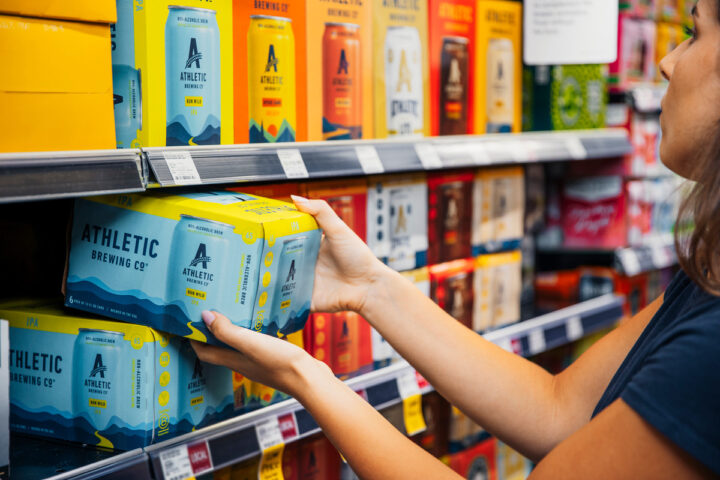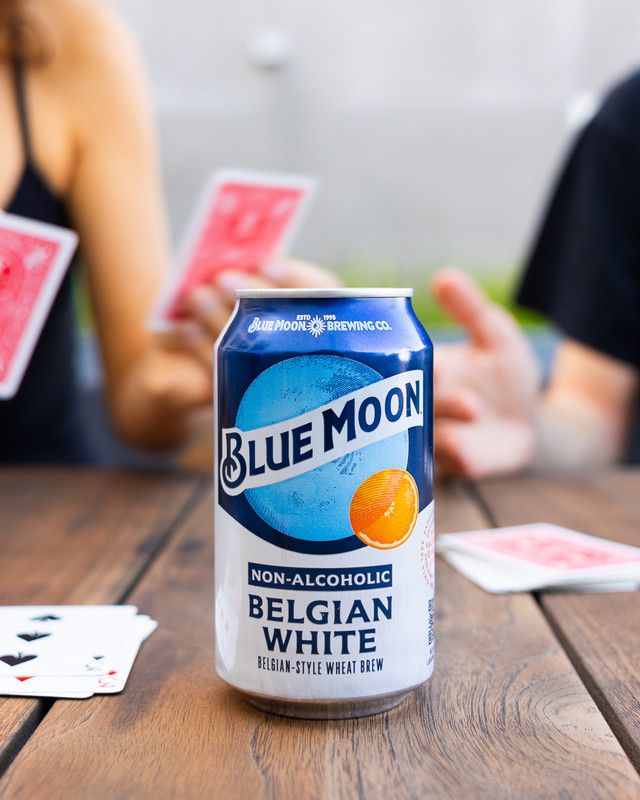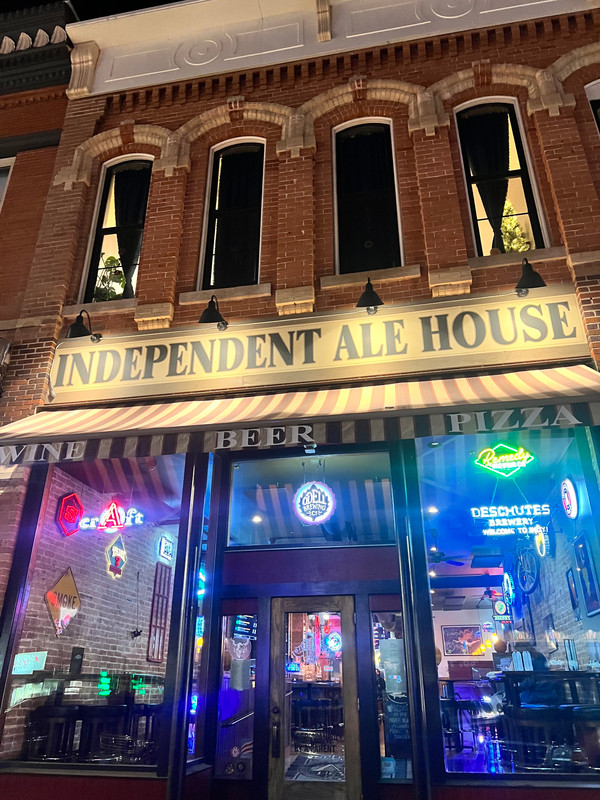
Like many retailers, Maryland Farms Wine & Spirits in Brentwood, Tennessee, is making room in its beer section for new entries in the fastest-growing segment of the business. “Our sales of non-alcoholic beers are fantastic,” says beverage manager Steven Rowland. “They’re now a part of our beer portfolio and we’re expanding our offerings.” Gone is the stigma that non-alcoholic brews (NABs) used to experience, he notes, thanks to the success of the Athletic line and entries from other craft brewers. “I just had a Designated Dale’s NA pils from Oskar Blues after cutting the grass, and it was fantastic,” the retailer says. “You can’t tell the difference between some NABs and the real thing.”
According to Impact Databank estimates, non-alcoholic beer volume surged 19% in 2024 to 24 million cases, up from 20.3 million in 2023, while the overall beer industry slumped more than 2%. Growth continues this year—the Beer Institute reports that through August, NAB sales were up 23%. Retailers and marketers alike are thrilled that the nascent segment shows continued growth opportunities, along with generally favorable margins. Bill Shufelt, co-founder and CEO of Athletic Brewing Co.—whose line of NABs has emerged as the category leader—attributes the segment’s growth to “product innovation and availability, exciting marketing, and overall general health and wellness trends. For the first time, the generation that’s turning 21 is finding great non-alcoholic brands on menus.” As a result, the category’s future is promising, Shufelt says. “You have a category with a really big future potential that still has a small stake so it’s natural that it will grow for some time to come.”
Dustin Hinz, CMO of California’s Firestone Walker Brewing Co., which launched 8Zero5 non-alcoholic blonde ($10 a 6-pack of 12-ounce cans) last year, notes that the trend for NABs today is demand driven. “Non-alcohol beer drinkers aren’t sitting on the sidelines anymore. They’re demanding better options,” he says. “Health and balance play a big role, but so does identity. Today’s consumer expects brands to reflect who they are, not just what they want to avoid.”

Athletic’s Prowess
Non-alcoholic beers today are marketed by a mix of major domestic brewers, importers, and craft brewers. The brand leading the way is Athletic ($20 a 12-pack of 12-ounce cans), which was named an Impact Hot Brand for skyrocketing sales of 5.5 million (2.25-gallon) cases last year, an increase of 55%. According to Shufelt, Athletic NABs—across a range of styles—are receiving a strong response at on- and off-premise accounts all around the country. While some channels like supermarkets and liquor stores were early adopters, others, including convenience stores and all manner of on-premise venues, are now on board, he says. Indeed, Athletic was one of the top beer share gainers on-premise in 2024, Shufelt notes, with advances in both chain and independent accounts. “We’re loved in dive bars, sports bars, all the way to Michelan-starred restaurants,” he says.
Athletic, led by top expression Run Wild non-alcoholic IPA, was named the official non-alcoholic beer partner of more than 100 Live Nation concert venues and four major festivals earlier this year. The product “has been flying at small to large music festival venues,” Shufelt notes. It also serves as the official non-alcoholic beer partner of London’s Arsenal Football Club. Additionally, the brand continues to support numerous grassroots athletic events, including triathlons and races, while contributing to protect and restore local trails though its “Two for the Trails” initiative.
As the Athletic brand continues to be successful, competition is certainly ramping up. But Shufelt says he’s unfazed. “We think it’s great,” he says. “We welcome others to help build the category with us. We’re excited to have Michelob Ultra, Heineken, and Corona as part of the category.”

According to Neilsen IQ, Anheuser-Busch’s (A-B InBev) Budweiser Zero ($13 a 12-pack of 12-ounce cans) was the No. 2 NAB in 2024, but that ranking could be disrupted this year with the launch in January of sibling Michelob Ultra Zero ($15). Ricardo Marques, senior vice president of marketing for Michelob Ultra, says the NAB entry has been “incredibly well received,” and in just six months it achieved more than 12% volume share of the segment. With only 29 calories a 12-ounce serving, Michelob Ultra Zero “appeals to a similar consumer base that is seeking an active and balanced lifestyle” as its parent brand, Marques says. Brand support is tied to marquee events, he notes, such as the Super Bowl and the FIFA Club World Cup. With all of its non-alcoholic brews combined, A-B InBev’s category share is more than twice that of its nearest competitor, Marques adds.
Line Extensions
Like A-B InBev, rival Molson Coors Beverage Co. has added to established brand portfolios lately with the introduction of Peroni 0.0% ($9 a 6-pack of 11-ounce bottles) and Blue Moon non-alcoholic Belgian white ($11 a 6-pack of 12-ounce cans). “We’re investing big in non-alcohol,” says Courtney Benedict, vice president of marketing for above premium beer at Molson Coors. “The opportunity is huge.” Noting that 80% of consumers who drink non-alcoholic beer also drink beer with alcohol, she says that a brand like Blue Moon Non-Alcoholic has the potential to appeal to many consumers. With the new addition, “there’s a Blue Moon for every occasion,” Benedict says. The brand is supported with the “It’s Not Not Drinking” campaign, which, the marketer says, will receive a big push late this year.
Italian import Peroni 0.0%, meanwhile, expanded nationally this year, and according to Benedict, dollar sales through mid-July were up 40%. “Wherever Peroni shows up, we want 0.0% there too,” she says, noting that the franchise is supported with racing programming and involvement at food and wine festivals. “Peroni and Peroni 0.0% are big bets for Molson Coors, and we’re looking to continue to fuel growth into next year.”
Another recent entry is Bero, co-founded by British actor Tom Holland and John Herman, a former executive at Nutrabolt. Launched last year, Bero is available in four expressions in accounts including Total Wine & More and BevMo, as well as mass merchandiser Target. “Non-alcoholic beverage has been a growth category at Target for five years now,” said John Conlin, senior vice president of merchandising, food, and beverage at Target, when announcing the availability of Bero at the chain early this year. “Consumer preferences are changing and I’m incredibly proud of the way our team and the Bero team have worked together to give drinkers everywhere another option for enjoying time with friends or unwinding at the end of the day.” Bero is priced at $12 a 6-pack of 12-ounce cans at Target.
Like Peroni 0.0%, Corona non-alcoholic and Guinness 0 are imported brands aiming for share growth in the space. Both products were Impact Hot Brands in 2024, with the former growing at a rate of 75% and the latter up nearly 90%.
Add-On Sales

Craft brewers are also eyeing opportunity in the non-alcoholic beer segment. Sierra Nevada Brewing, for example, launched Trail Pass in late 2023, and today the line is comprised of year-round offerings such as IPA and Golden, as well as limited availability products. “Our wholesalers, accounts, and consumers have been really engaged,” says chief commercial officer Ellie Preslar, noting that the overall market for NABs is developing more quickly than it has for other styles. According to Firestone Walker’s Hinz, 8Zero5—which, at press time, was expanding beyond California—also has been met with an “incredibly encouraging” response from consumers. While craft NABs “may not out scale the global giants, we can out-authentic them,” he says.
Beer retailers are enthused by trends for all manner of NABs. Customers aren’t just buying the unspiked products, says Rowland of Maryland Farms, where NABs are priced at $10-$12 a 6-pack. “They’re also purchasing full-strength beer,” increasing rings, he notes. “It’s a mix and match transaction.”
On-premise operators are likewise seeing increasing demand for the products. “We’re definitely seeing growth and interest in non-alcoholic beers,” says Caleb Blair, manager of James E. McNellie’s Public House in downtown Tulsa, Oklahoma. One of three McNellie’s, his location offers a half-dozen NABs, including major domestics, imports, and crafts, priced at $5-$7 a 12-ounce serving. “Our sales have doubled in the last couple of years,” he notes. Similarly, Justin Henrichsen, owner of Independent Ale House in Rapid City, South Dakota, says young legal-drinking-age consumers “aren’t interested in drinking alcohol,” and NABs help them feel more social when “hanging out with friends.” Independent Ale House offers nearly a dozen NABs, priced at $4-$5 a bottle or can.
Marketers of NABs recommend retailers be proactive with the fledgling category and effectively merchandise the products to drive impulse and incremental sales. “Assortment is one of the biggest tailwinds out there,” says Athletic’s Shufelt, so an expanded selection of NAB offerings provides opportunity. “Pick high-quality products, and make them visible,” says Sierra Nevada’s Presler. Molson Coors’ Benedict adds that displays can be pivotal in helping to build sales throughout the year, “with an additional emphasis during key time periods when consumers are looking for non-alcohol options, like after the holidays.”
While the overall beer category continues to struggle to grow sales, non-alcoholic brews are a bright spot. “There are more health-conscious consumers today,” notes Maryland Farms’ Rowland. “Drinking of alcoholic beverages is down but non-alcoholic beer will continue to grow.” Hinz agrees. “The ceiling is higher than most people think,” the Firestone Walker executive says. “We believe non-alcoholic beer can go from niche to cultural staple.”